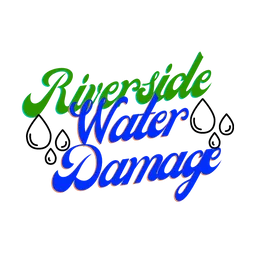In the face of unforeseen disasters, water damage remains one of the most common and devastating events that can occur in both residential and commercial properties. When a water-related disaster strikes, it’s crucial to act swiftly and effectively to minimize the damage and restore the affected areas to their pre-damaged condition. In this comprehensive article, we delve into the science behind effective water damage cleanup and remediation, presenting the best practices and strategies to address this critical issue.
Understanding Water Damage
Before delving into the remediation process, it’s essential to understand the different categories and classes of water damage. Water damage can be categorized into three main types:
Category 1: This involves clean water that originates from a sanitary source, such as broken water supply lines, faucets, or rainwater. Although category 1 water damage is not initially harmful, if left unaddressed, it can escalate into more severe damage.
Category 2: Commonly referred to as “gray water,” category 2 water damage is water that contains significant contaminants and poses health risks to humans. This type of water damage may come from washing machines, dishwashers, or overflowing toilets.
Category 3: Also known as “black water,” this is the most severe and hazardous type of water damage. It includes highly contaminated water from sewage backups, floodwaters, or stagnant water. Category 3 water damage poses severe health risks and requires immediate attention.
The Importance of Swift Action
When water damage occurs, time is of the essence. Swift action is essential to prevent further damage, mold growth, and structural issues. Here’s why acting promptly is crucial:
1. Mold Growth Prevention
Mold thrives in moist environments and can start growing within 24 to 48 hours after water damage occurs. Mold not only causes additional damage to structures but also poses significant health risks, especially to individuals with respiratory conditions or allergies.
2. Structural Integrity
Water can weaken the structural integrity of buildings, compromising their stability. Prolonged exposure to moisture can lead to rot, warping, and deterioration of building materials, potentially rendering the property unsafe.
3. Salvaging Possessions
Swift action increases the likelihood of salvaging personal belongings and valuable items affected by water damage. Items like documents, photographs, and electronics can often be restored if treated promptly and correctly.
The Water Damage Cleanup Process
To effectively mitigate water damage, a systematic cleanup and remediation process must be followed. This process involves several critical steps:
1. Assessment and Inspection
The first step is to assess the extent of the water damage and identify the category and class of water involved. A thorough inspection helps create a roadmap for the restoration process by determining the resources required and potential hazards.
2. Water Extraction
The next step is to remove standing water from the affected areas. Professional-grade pumps and vacuums are used to extract water swiftly and efficiently, minimizing the risk of further damage.
3. Drying and Dehumidification
After water extraction, the affected areas need to be thoroughly dried and dehumidified. Industrial-grade air movers and dehumidifiers are deployed to speed up the evaporation process, preventing mold growth and further damage.
4. Cleaning and Sanitization
All surfaces, belongings, and contents impacted by water damage must be cleaned and sanitized. This step ensures the removal of contaminants and bacteria, restoring the affected areas to a safe and habitable condition.
5. Restoration and Repairs
Once the affected areas are clean and dry, the restoration process begins. This step involves repairing and replacing damaged materials, such as drywall, flooring, and insulation, to return the property to its pre-damaged state.
Effective Water Damage Remediation Strategies
For effective water damage remediation, certain strategies must be employed to achieve optimal results. These strategies encompass both prevention and mitigation techniques:
1. Preparing for Potential Water Damage
Implementing preventive measures is essential to minimizing the risk of water damage in the first place. Regular inspections, proper maintenance of plumbing systems, and the installation of water leak detection devices can help identify and address potential issues before they escalate.
2. Swift Response
As mentioned earlier, responding promptly to water damage is crucial. Establishing an emergency plan and having the contact information of reliable water damage restoration professionals on hand ensures a swift and efficient response in case of an emergency.
3. Professional Expertise
Water damage cleanup and remediation are best handled by certified professionals with the necessary expertise and equipment. DIY attempts may exacerbate the problem or lead to inadequate restoration, making it essential to entrust the task to experienced restoration specialists.
Conclusion
In conclusion, understanding the science behind effective water damage cleanup and remediation is vital for safeguarding your property and belongings. Acting promptly, employing the right strategies, and seeking professional help are all crucial elements of mitigating Riverside water damage effectively. By following the guidelines presented in this article, property owners can take the necessary steps to protect their investments and ensure a safe and healthy environment.


